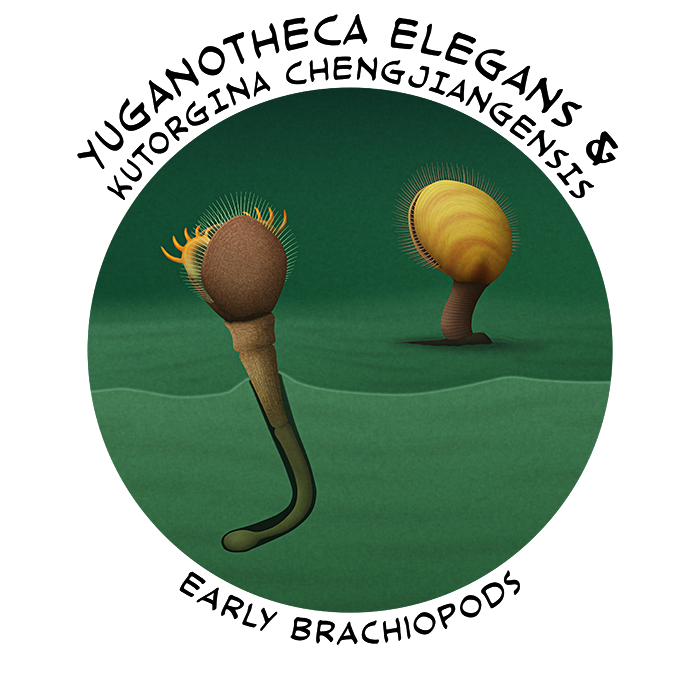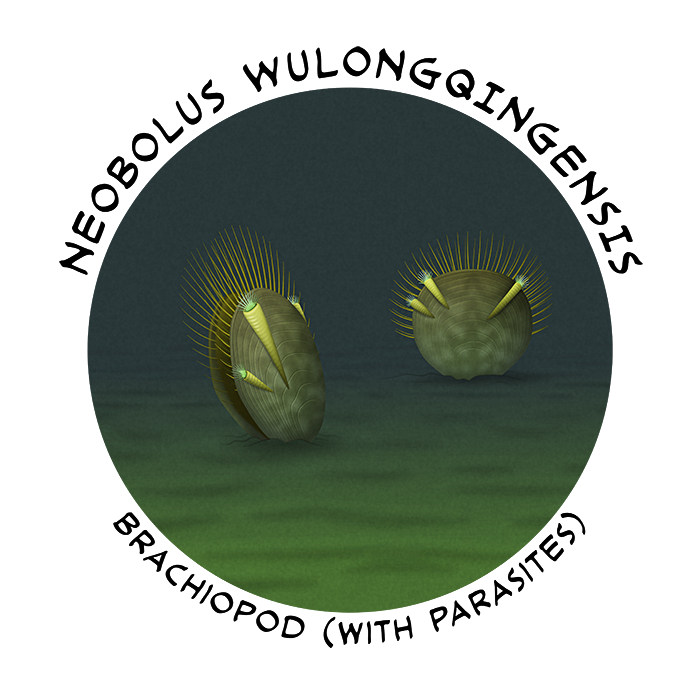While modern brachiopods superficially resemble clams, they’re not actually very closely related to each other. Clams are bivalve molluscs, related to snails and squid, while brachiopods are lophophorates related to bryozoans and horseshoe worms.
Their two shell valves are also arranged very differently – while bivalve shells originate from the left and right sides of their bodies, brachiopods grow theirs on the top and bottom.
They first appear in the fossil record in the early Cambrian, about 530 million years ago, but they may have actually diverged from a tommotiid-like ancestor as far back as the late Ediacaran. Only around 300 species survive today, but during the Paleozoic they were some of the most abundant filter-feeding and reef-building animals with tens of thousands of fossil species known. Different species tended to have strict habitat and temperature preferences, and so their fossils are also useful indicators of how ancient climates changed over time.
Brachiopods probably descended from tommotiids with stiff cone-like bodies, and some early evolutionary branches like Lingulosacculus and the hyoliths seem to retain that long conical shape in their larger lower shell valves.
Later lineages compacted their bodies and developed more similarly-sized valves, and Yuganotheca elegans might be an example of that sort of transition.

Known from the Chinese Chengjiang fossil deposits (~518 million years ago), this lophophorate animal was about 4cm long (1.6″). It had a unique body plan with two unmineralized brachiopod-like shell valves around a chunky-tentacled lophophore, set above a “collar” region, a rigid conical tube-like body, and a long fleshy pedicle.
It would have lived partially buried in soft seafloor sediment with its pedicle acting as an anchor, while its stiff conical body raised its shells and lophophore up higher into the water column. The surface of its shells, collar, and cone were also coated with sand grains in a similar manner to the tubes of some horseshoe worms.
It may have been a stem lineage brachiopod, potentially representing a stage of their evolution where bivalved shells had developed but the rest of the body hadn’t yet become fully enclosed by them. It’s also been proposed as a more basal brachiozoan, close to the common ancestor of brachiopods and horseshoe worms – or it could just be a weird side branch of early brachiopods that experimented with a different body plan.
Meanwhile, Kutorgina chengjiangensis was a true brachiopod that was an early representative of the rhynchonelliforms – a major lineage characterized by having calcareous shells with complex hinges.
Also known from Chengjiang, this brachiopod had a shell about 1.5cm long (0.6″) with a fringe of hair-like setae, a spiral-shaped lophophore, and a thick stalk-like pedicle with a ribbed texture that attached it onto hard surfaces. Its anatomy shows a mixture of features from both rhynchonelliform and linguliform brachiopods, helping to confirm the shared ancestry of these two very different groups.

Linguliforms are another major lineage of brachiopods, some of which have changed very little in outward appearance since they first appeared in the Cambrian. They’re distinguished from rhynchonelliforms by having apatite shells with simpler hinge mechanisms, and they use different sets of muscles to open and close their valves.
Neobolus wulongqingensis was an early linguliform brachiopod that lived in Yunnan, China, about 512 million years ago. Its shells could grow up to 6mm long (0.25″), but generally averaged closer to 2mm (0.08″) – and it’s especially notable for being one of the oldest known fossilized examples of a clear parasite-host ecological interaction.
Tubes of an unidentified worm-like animal are preserved encrusted onto many specimens of this brachiopod, often with multiple tubes on a single shell. All of them were aligned so that the parasite could reach into the flow of water being pumped into the host’s interior, “stealing” incoming nutrients.
Infested Neobolus were also noticeably smaller than parasite-free individuals, indicating that the worms’ presence was actively harmful to them and stunted their growth.
…And that brings us to the end of this month, but not to the end of the Cambrian Explosion series. We’re only halfway done, so later this summer we’ll be returning to the early Paleozoic for part 2 – this time focusing entirely on the ecdysozoans and the rise of the arthropods.
